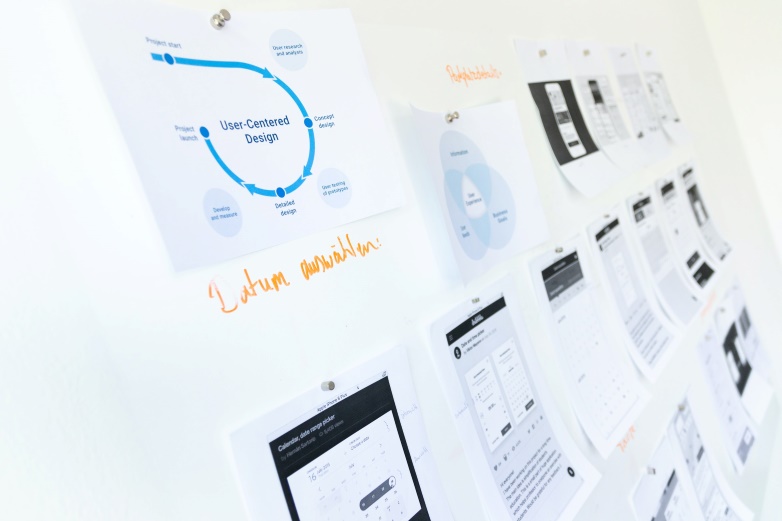Can You Patent a Process?
In the ever-evolving landscape of innovation, the protection of intellectual property (IP) is a crucial consideration for inventors, businesses, and creators. Patents play a pivotal role in safeguarding novel ideas, processes, and methods, ensuring that the originator can reap the benefits of their ingenuity. One common query that often arises in this context is whether it’s possible to patent a process. This article delves into the intricacies of process patents, shedding light on their eligibility criteria, benefits, downsides, and the steps involved in obtaining one.
The Basics of a Patent
A patent is a legal document granted by a government authority that confers exclusive rights to the inventor for a limited period. This exclusive right allows the inventor to prevent others from making, using, selling, or importing the patented invention without permission. Patents are typically granted for inventions that fall into the following categories:
- A process: A process patent encompasses a series of steps or methods that lead to a specific outcome. This outcome can be the production of a product, the execution of a particular task, or the achievement of a desired result. Process patents are instrumental in industries such as manufacturing, technology, and pharmaceuticals, where methods play a pivotal role in creating innovative solutions.
- A machine: A machine patent covers mechanical devices that perform specific functions or tasks. From complex industrial machinery to intricate consumer gadgets, machine patents protect the physical embodiments of inventors’ engineering prowess.
- A composition of matter: This category involves patents that encompass novel compositions of substances, materials, or chemicals. It includes innovations ranging from pharmaceutical compounds to new materials with unique properties.
- A manufacturing technique: Manufacturing technique patents are directed at processes and methods that facilitate the production of goods on an industrial scale. They ensure that innovative methods of production remain under the control of their creators.
- A significant improvement to any of the above: Innovation doesn’t always emerge from scratch; it often evolves from enhancing existing inventions. Patents are also granted for significant improvements that add value, efficiency, or novelty to previously patented inventions.
Can I Patent My Process?
While the patent system is designed to incentivise innovation and protect inventors, not every method or process is eligible for a patent. There are strict limitations and criteria in place to ensure that only deserving inventions receive patent protection. For a process to be eligible for patenting, it must meet the following criteria:
- Usefulness: The process must have a practical application and provide some form of benefit or utility.
- Novelty: The process must be new and not previously disclosed or known to the public. If the process has been published, used, or disclosed in any way prior to filing the patent application, it might not be eligible.
- Non-Obviousness: The process must not be obvious to someone skilled in the relevant field. In other words, it should involve a level of innovation that goes beyond what experts in the field would consider routine.
- Sufficient Disclosure: The patent application must provide enough information that someone with general knowledge in the industry can understand and replicate the process without undue experimentation.
It’s important to note that certain types of subject matter, such as printed matter, may not be eligible for patent protection as they fall under different forms of IP protection, such as copyright.
How to Patent a Process in the UK
The process of obtaining a patent can be intricate and time-consuming, often requiring professional assistance to navigate the complexities. Here’s a general overview of the steps involved in patenting a process in the UK:
- Documentation and Application: For a new process, create detailed documents outlining the process and its significance. Submit the application to the Intellectual Property Office (IPO).
- Preliminary Examination and Search: Upon submission, you can request a ‘search’ from the IPO to determine if your process is novel and non-obvious. After approximately 18 months from the filing date, the IPO publishes your patent application.
- Substantive Examination: Following publication, a ‘substantive examination’ is conducted by the IPO. This examination involves a thorough review of your application to ensure it meets all the criteria for patentability.
- Resolution of Concerns: The patent grant depends on addressing any concerns raised by the IPO during the examination. This might involve making amendments to your application or providing additional information.
- Grant of Patent: If the IPO is satisfied with your application, they will grant you a patent for your process, providing you with exclusive rights for a specified period

How Long Will My Patent Last?
The duration of a patent’s validity is not a universal constant; rather, it varies depending on the nature and category of the invention. In the case of a business method or process, the patent is typically valid for 17 years. This duration is the same as that of a utility patent, which encompass a diverse range of inventions from mechanical devices to chemical compounds.
During this period, patent holders enjoy a unique set of rights that extend beyond merely preventing unauthorised use. They have the leverage to negotiate and enter into licensing agreements—a practice that lies at the crossroads of innovation and commercialisation. IP licensing serves as a mechanism through which patent holders can monetise their inventions, fostering a symbiotic relationship between creators and entrepreneurs.
The Benefits of Patenting a Process
Patenting a manufacturing process can offer a range of benefits to inventors and businesses:
- Exclusive Use: A patented process provides the patent holder with up to 20 years of exclusive rights. This exclusivity serves as a strong deterrent against competitors using the same process, giving the patent holder a competitive edge.
- Monetary Opportunities: A patented process can be a valuable asset for licensing, loans, or sale. It opens doors to potential collaborations and partnerships, enhancing the commercial advantage of the patent holder.
- Enhanced Protection: While trade secrets can offer a level of confidentiality, patents provide stronger legal protection against process exposure. They offer a clear framework for legal action in case of infringement.
- Tax Benefits: In the UK, the Patent Box scheme lowers the tax rate on profits generated from patented processes. This not only reduces the tax burden but also makes the business more attractive for investments and marketing.
The Downsides to Patenting a Process
While patenting a process offers significant advantages, it also comes with certain downsides:
- Detailed Disclosure: To obtain a patent, you need to provide a detailed and comprehensive disclosure of your process. This disclosure enables experts in the field to replicate your process, potentially revealing sensitive manufacturing methods to competitors.
- Confidentiality Challenges: If maintaining the confidentiality of your process is of utmost importance, patenting might not be the best route. Trade secret management could be an alternative, but it’s often challenging to enforce and maintain.
- Complex Enforcement: Policing a process patent can be complex, especially when the manufacturing process is not easily observable. Providing evidence of infringement might require substantial effort and resources.
- Cost Considerations: The process of obtaining and maintaining a patent can be costly, involving filing fees, legal expenses, and maintenance fees. It’s essential to weigh these costs against the potential benefits.
Seek Professional Advice
Navigating the world of patents and intellectual property can be daunting. As every situation is unique, seeking professional advice is highly recommended. Legal experts specialising in intellectual property can provide tailored guidance based on your specific circumstances. They can help determine whether your process is eligible for patent protection and whether pursuing a patent aligns with your current goals and position.
Minesoft Makes Patent Search Simple
In the journey of patenting your process, leveraging the right tools can significantly streamline the process. One such tool is Minesoft Origin, a software solution designed to simplify patent searches and analysis by leveraging AI. For individuals and businesses looking to patent their own processes or methods, Minesoft Origin offers an intuitive platform with in-built, AI-powered, search and review features that aids in patent research, ensuring that your invention is novel and non-obvious. To explore how Minesoft can assist you in your patenting journey, request a free trial today.
Final Thoughts
The world of patents and intellectual property is multifaceted, and the decision to patent a process requires careful consideration. Understanding the eligibility criteria, benefits, and challenges of process patents is crucial in making an informed choice. While patents offer a robust framework for protection and monetisation, they also entail responsibilities and costs. As innovation continues to drive progress, the protection of processes and methods remains a vital aspect of fostering creativity and safeguarding inventors’ rights.


Comments are closed.